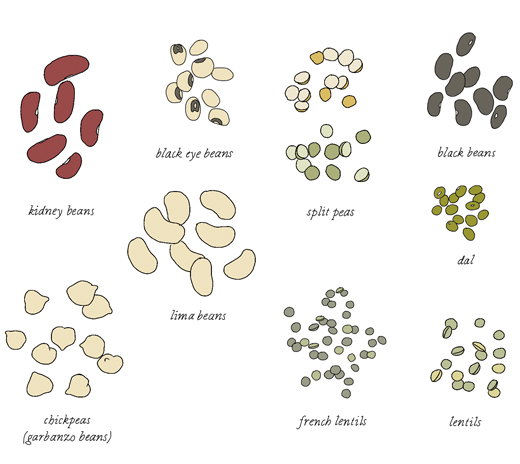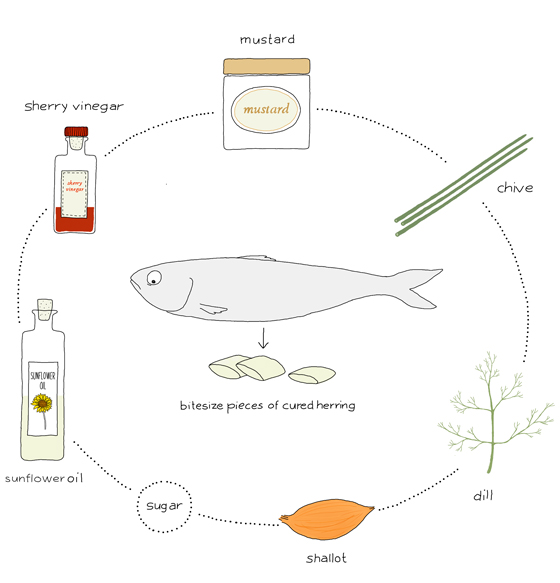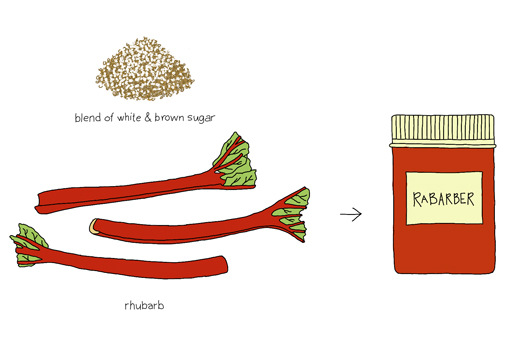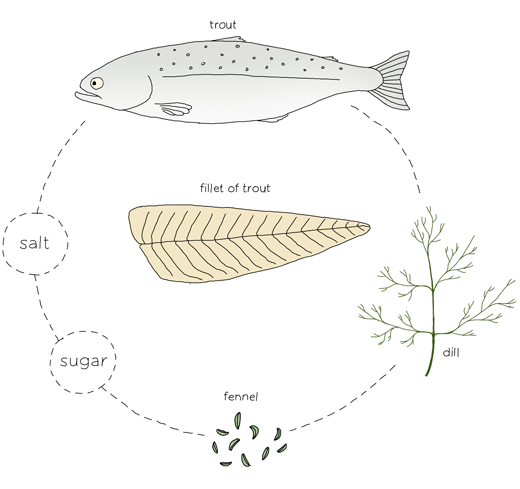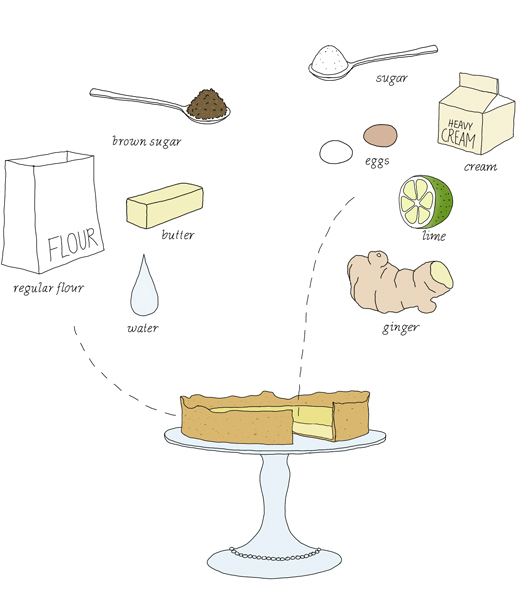
Like several other countries Sweden celebrates name days, which means that every single day of the year has a specific name of a person. For some people (for example, my mother in law) the name day is more important than their own birthday. For others it’s just an ordinary day.
In the middle of July, Swedes celebrates fruntimmersveckan (the week of the ladies) which is a week when there are six women’s names in a row. This week is especially interesting if you are into cakes. Traditionally you need to bake a different cake for each woman who has their name-day this week. As I’m one of the six ladies I will celebrate as follows…
Cherry & Almond Clafoutis with Cognac for Sara on the 19 July
Red Currant Tart for Margareta on the 20 July
Lime & Ginger Tart for Johanna on the 21 July (see below)
Rhubarb & Meringue Cake for Magdalena on 22 July
Lemon & Strawberry Cake with White Chocolate for Emma on 23 July
Chocolate Caramel Tart for Kristina on 24 July
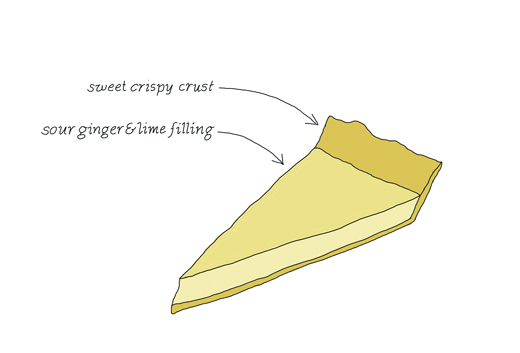
Johanna’s Ginger & Lime Tart
This Ginger & Lime cake has a nice combination of a sweet cookie like pie shell with a sour ginger-rich filling. It can be served as is or with freshly whipped cream.
Dough
1 ¼ cup (170 g) flour
100 g (3.5 oz) butter
4 tablespoon sucanat
a splash of cold water
Filling
3 eggs
2/3 cup (150 ml ) sugar (works with either white or brown)
7/8 cup (200 ml ) cream
Grated peel from one lime
Juice from 2 limes
1 inch (2 ½ cm) piece of ginger
Decoration (optional)
Powdered sugar
Mix together butter, flour and sugar with your bare hands. When the butter is well divided, add a splash of water and work the dough well. After the dough has rested for half an hour in the fridge, line the dough in a 9 ½ inch (24 cm) springform or similar. Bake the tart shell at 400ºF (200ºC) for about 15 minutes. The shell should start to get some nice color.
Let the pie shell cool while you whip together egg and sugar until fluffy. Add the cream and blend well together before adding lime and ginger. Adjust the flavor with more or less ginger and lime to your liking. Pour the filling into the pie shell and bake in the oven at 400ºF (200ºC) for about 20 minutes. The filling should have set. Let the cake cool down before dusting some powdered sugar over. Enjoy!
This article was originally published at EcoSalon on 19 July 2012

